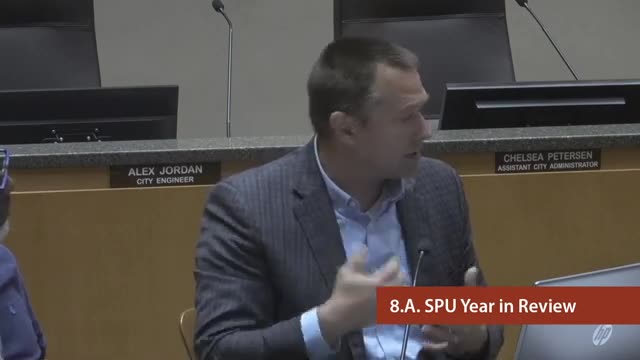Water system faces crisis with alarming backflow failures
June 22, 2024 | Shakopee City , Scott County , Minnesota

This article was created by AI summarizing key points discussed. AI makes mistakes, so for full details and context, please refer to the video of the full meeting. Please report any errors so we can fix them. Report an error »

In a recent government meeting, officials discussed critical infrastructure and regulatory challenges related to water management and backflow prevention systems. The conversation highlighted the importance of strategic planning to accommodate future developments while ensuring compliance with existing regulations.
One key point raised was the necessity of maintaining adequate water treatment facilities in light of ongoing urban development. Officials emphasized the need to secure locations for treatment facilities that align with the growing demand for water, particularly in areas where new apartment complexes and other developments are planned. The discussion underscored the urgency of avoiding scenarios where existing infrastructure could be compromised, potentially leading to costly adjustments, such as the dismantling of newly constructed buildings.
The meeting also addressed the current state of backflow prevention systems within the community. With approximately 6,200 backflow assemblies in the system—4,200 residential and 2,000 commercial—officials reported a concerning compliance rate of only 58% for residential systems and 70% for commercial ones. Alarmingly, nearly 40% of these backflow assemblies are failing, raising questions about the effectiveness of current testing and maintenance protocols.
Officials noted that backflow preventers are mandatory for properties with automatic or outdoor sprinkler systems, yet the high failure rates suggest a need for improved oversight and education on maintenance practices. The discussion concluded with a call for further investigation into the reasons behind these failures and potential solutions to enhance compliance and system reliability.
Overall, the meeting highlighted the critical intersection of infrastructure planning and regulatory compliance in ensuring a sustainable water supply for the community.
One key point raised was the necessity of maintaining adequate water treatment facilities in light of ongoing urban development. Officials emphasized the need to secure locations for treatment facilities that align with the growing demand for water, particularly in areas where new apartment complexes and other developments are planned. The discussion underscored the urgency of avoiding scenarios where existing infrastructure could be compromised, potentially leading to costly adjustments, such as the dismantling of newly constructed buildings.
The meeting also addressed the current state of backflow prevention systems within the community. With approximately 6,200 backflow assemblies in the system—4,200 residential and 2,000 commercial—officials reported a concerning compliance rate of only 58% for residential systems and 70% for commercial ones. Alarmingly, nearly 40% of these backflow assemblies are failing, raising questions about the effectiveness of current testing and maintenance protocols.
Officials noted that backflow preventers are mandatory for properties with automatic or outdoor sprinkler systems, yet the high failure rates suggest a need for improved oversight and education on maintenance practices. The discussion concluded with a call for further investigation into the reasons behind these failures and potential solutions to enhance compliance and system reliability.
Overall, the meeting highlighted the critical intersection of infrastructure planning and regulatory compliance in ensuring a sustainable water supply for the community.
View full meeting
This article is based on a recent meeting—watch the full video and explore the complete transcript for deeper insights into the discussion.
View full meeting
